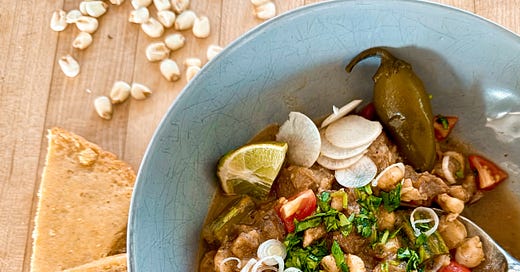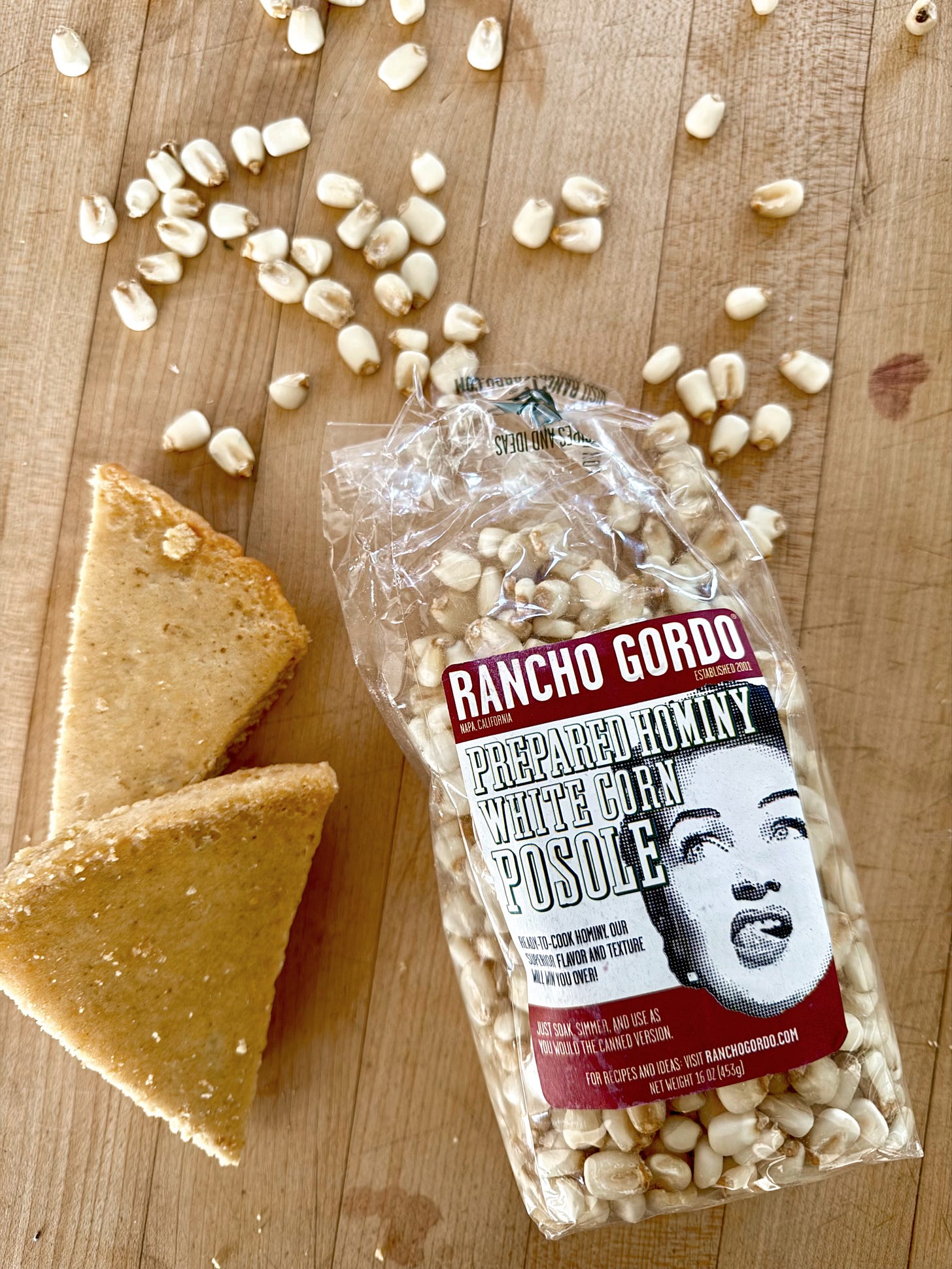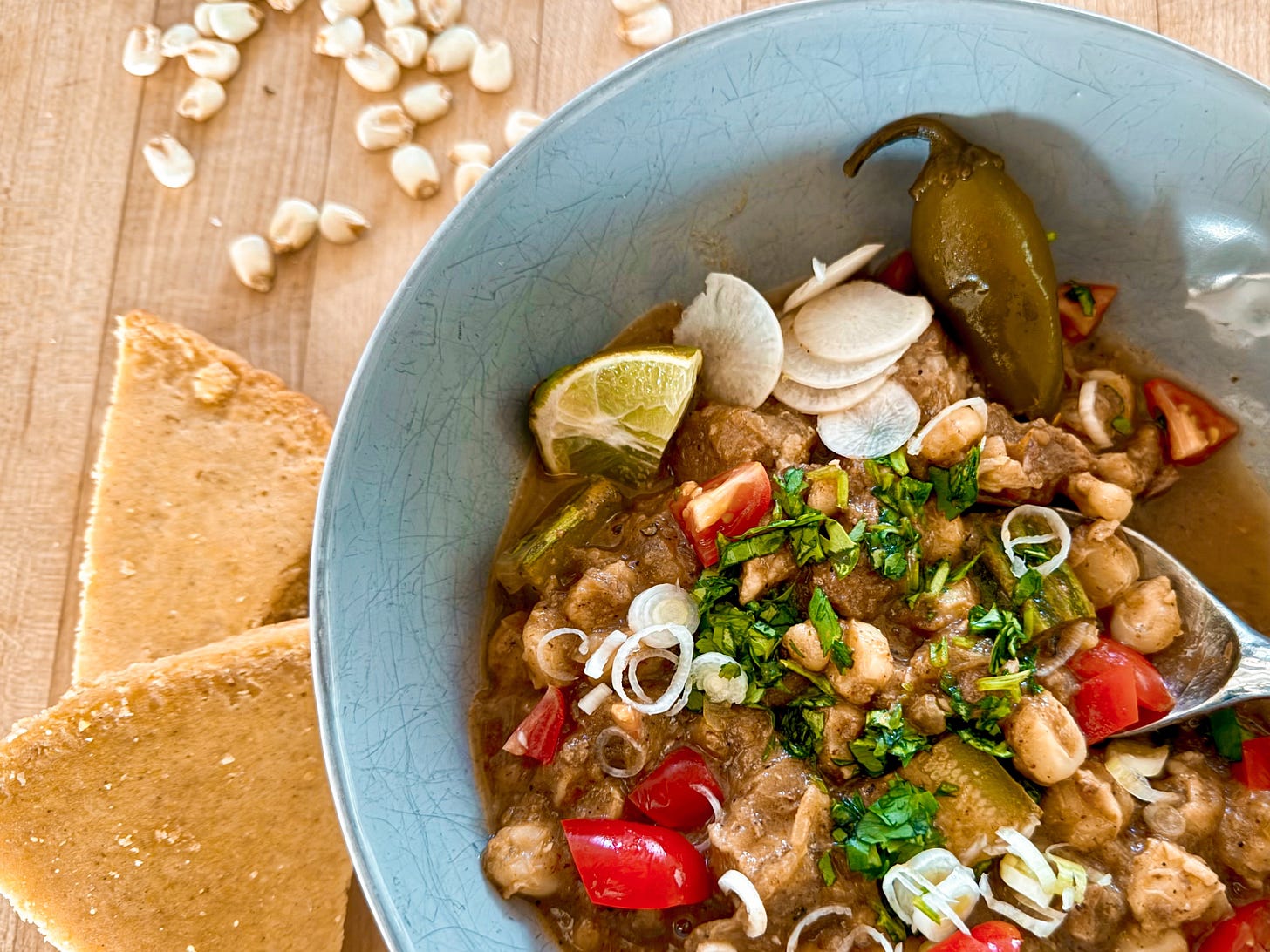If someone asked your nine-year-old self to contribute a can of food to school for an emergency preparedness kit, what would you have brought? Chef Boyardee? Spaghetti O’s? Tuna? How about hominy? Oh, what’s hominy you (or your nine-year-old self) asks? Well, that makes you like every other kid in my 4th grade class, their questions delivered with a hefty dose of side eye. All I can say now, as I said then, if you don’t know what hominy is, you are missing out. Nine-year-old me knew that when a ground splitting earthquake came, or the zombie apocalypse, hominy was what I was going to eat.
Growing up in California we had a peculiar ritual at the start of each school year: earthquake preparedness. As sure as the ground occasionally moved under our feet in waves, or rattled the pictures on the wall, The Big One, was coming. The Big One, a massively destructive earthquake predicted to hit the San Andreas Fault in Southern California, was overdue and we were schooled annually on how to be ready, canned food and all.
I was thinking about this as we got an email from our son’s school a couple of weeks ago, notifying us of the “Great California Shakeout Drill” where our adorable four-year old would be learning what to do in the event of an earthquake. Just like I did all those years ago, these preschoolers would be practicing how to duck under a table or desk, cover their necks and hold on to a furniture leg while riding out the shaking earth. Whenever the mythical Big One hit, they would know what to do.
In my day, this annual earthquake drill was accompanied by the restocking of the classroom preparedness kit. Each student was asked to bring a can of food from home to contribute. As I recall, there were no parameters on this request, just a can of food. You would think that if we were really concerned with the logistics of feeding a class for an extended period following The Big One, there might have been a sign-up sheet to make sure we were hitting the appropriate balance of protein, fruit and veg. But no, it was left up to our whims. Rather, I’m guessing it was mostly parental whims. Except in my case, I remember my mother telling me to go into our well stocked pantry and pick anything I wanted to bring. Selecting from between cans of green beans and peas, I took the can of hominy.
Hominy is corn. The difference between hominy and corn, is that the kernel has been treated with an alkaline mixture, usually lye or lime, that removes the husk and at the same time, makes it easy to digest and more nutritious. The process, a Mesoamerican invention called nixtamalization, is the same that is used to prepared corn for the flour that makes masa, the dough from which tortillas and tamales are made.
In its whole form, the kernels, in the United States, are called hominy. Like dried beans, dried hominy can be stored for a long period of time. To prepare, they require a good soak in water of at least 6 hours then simmering 1 to 1.5 hours until tender. The canned variety of hominy, like canned beans, reduces this process to the length of time it takes to open the can.
It was the canned variety I ate growing up. Starchy and toothsome, my mother prepared it simply warmed on the stove with a healthy dose of butter. Less sweet than buttered corn, but texturally more interesting than buttered pasta, it was food Nirvana to any picky nine-year-old. Again, those kids in my class did not know what they were missing.
These days I mostly eat hominy in pozole, a comforting stew perfect for cooler days, or just the low-level anxiety associated unpredictable threats largely beyond your control: earthquakes, climate change, war(s), elections, pick your poison.
There are many variations of pozole, at its most basic it is a dish of simmered meat - pork or chicken - and hominy. It may include tomatoes or tomatillos. It can be slick with chilies or mild with warming seasonings of cumin and coriander. The finished dish is always served with accompaniments like shredded cabbage, sliced radish, chopped onion and cilantro and wedges of lime. As I grew up, I’ve also graduated from canned to dried pozole. I soak the kernels overnight or first thing in the morning. The cooking time takes longer, but the resulting kernel has a firmer texture and more robust taste than canned, with little more physical effort than using a can opener.
The Big One never happened while I was at school. It still hasn’t happened. But these days there are wildfires and mudslides and democracy to worry about. Perhaps school emergency preparedness kits are more practical now, arranged by administrators to cover actual concerns like nutrition, rather than the tastes of a child.
The thing about emergencies is that you never know when they are going to happen, that is why you prepare. When it does come, because it will eventually, what better to have than something that brings comfort? That’s why, despite the snickers of the other kids, I brought hominy in again in 5th grade and again the year after that. Maybe that is why I’m making pozole now. Whatever “big one” happens, whenever it happens, I know what I’m eating.
For other pots of comfort food …
Pork and Green Potaje from “Bean Pot Days”
Roman or Hunter Style Lamb from “The Black Wine of Lot”
Chicken Breasts with Farro and Delicata Squash from “The Celebrity Farmer Next Door”
The Big One Pozole
Note: Look for dried hominy at Mexican markets or order from Rancho Gordo. In the United States, canned hominy is available at most supermarkets, near jarred salsas and taco seasoning packets. Note that this is a pretty mild pozole, made so that my son will eat it. If you want to punch up the heat, add more chile powder or a chopped chipotle pepper in adobo. If, like me, you have kids who don’t like spicy food, keep it mild and punch yours up to taste at the end topping with extra chopped chilies.
Serves: 6 – 8
¾ cup dried hominy or 1 - 15 oz. can hominy (drained)
2 T. vegetable oil plus extra
2 lb. boneless pork shoulder, cut in 1-inch cubes
Salt
Pepper
1 large onion, chopped
4 cloves garlic, peeled and lightly crushed
2 tsp. ancho chile powder
1 T. ground cumin
1 tsp. ground coriander
1 half bunch cilantro, leaves and stems separated, stems minced, leaves roughly chopped
4 Roma tomatoes, quartered
2 bay leaves
4 cups low sodium chicken broth or water
½ tsp. salt
1 medium zucchini cut in half lengthwise then crosswise into 1 inch pieces
Garnish: shredded cabbage, minced white onion or sliced green onions, sliced radishes, avocado, chopped tomato, lime wedges, pickled or fresh jalapeno, chopped cilantro leaves (reserved)
If using dried hominy, soak in room temperature water for at least 6 hours before cooking. When ready to cook, drain and pick over removing any rocks.
When ready to cook, heat 2 T. oil in a large, heavy pot, preferably cast-iron, over medium-high heat. Seasons pork cubes on all sides with salt and pepper. Working batches so as not to crowd the meat, brown on all sides. Remove browned meat to a medium bowl and repeat until all meat is browned. Once all meat is browned and removed to the bowl, reduce heat to medium, adding more oil if necessary, so that there is 1 T. in the pot. Add onions and garlic, sweating for five minutes until onions are softened. Add chile powder, cumin and coriander and stirring for 60 seconds until spices are fragrant. Stir in chopped cilantro stems, tomatoes, and bay leaves. Add soaked dried hominy or canned drained hominy to the pot along with the pork, chicken broth or water, and salt. Cover the pot and turn heat up to bring to a boil then reduce heat to a medium low. Keep on a simmer for 1 – 1.5 hours, stirring occasionally. If liquid is reducing too much, add some water. Final stew should be thick but still brothy enough to eat with a spoon. Pozole is ready when meat and hominy are tender. Five minutes before serving, add zucchini and simmer until tender.
To serve, spoon into bowls and allow everyone to top with garnishes to taste.
Goes very nicely with cornbread, an entire bag of tortilla chips and persistent, low levels of dread.








On your California trip you will have a chance to experience it!
I’ve never heard of hominy 🫣